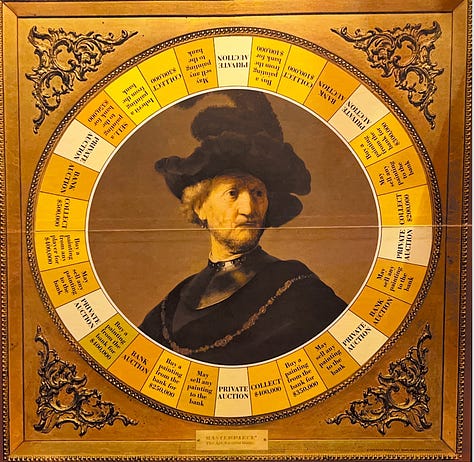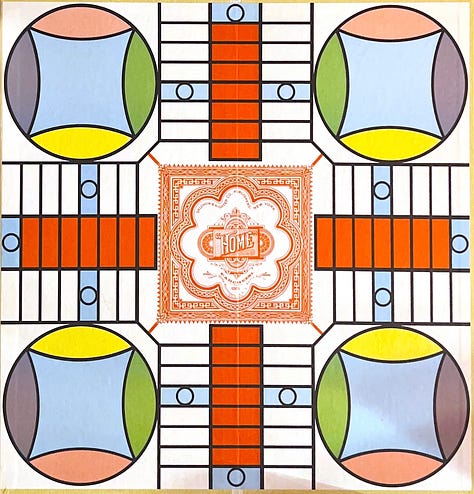Board Games/Art As Function
A little-ish one today.
I treasure my little glimpses into bright universes, fantasy worlds, visual candy, wherever I get them. I still remember how hurt I was when I learned that Alphabet City is just a neighborhood with alphabetical avenues instead of a Sesame Street-ish world that my parents had been hiding from me.
Today, I give you board games. Why?
Board games are silly: they have intricate premises which are ultimately unrelated to the gameplay, yet I still hold out the gullible hope that I’ll be transported into whatever world the game lives inside. To me, the allure of a gameboard isn’t its youthful connotation; it’s the intricacy, the loving detail.
The boards hold both art and function—each carefully designed space also fulfills a purpose within a premade structure. And when the pieces are absent, the art/function relationship is even more evident.
You’ll notice that the below games are all older. Some I’ve bought, some I lucked out with and stole from my family. I love that they’re each a little time capsule, containing styles and wording that we don’t realize is of its era until years later. We think things are timeless, but they never are.
A board game’s purpose is joy; it necessitates the inclusion of art; it’s timeless and utterly dated. To me, that’s the perfect recipe.






Top row, L → R: Masterpiece (1970), Which Witch? (1971), Parcheesi (1970)
Bottom row, L → R: Aggravation (1972), Holly Hobbie Wishing Well (1976), Scrabble For Juniors (1968)
I love you I love you. Bye!



